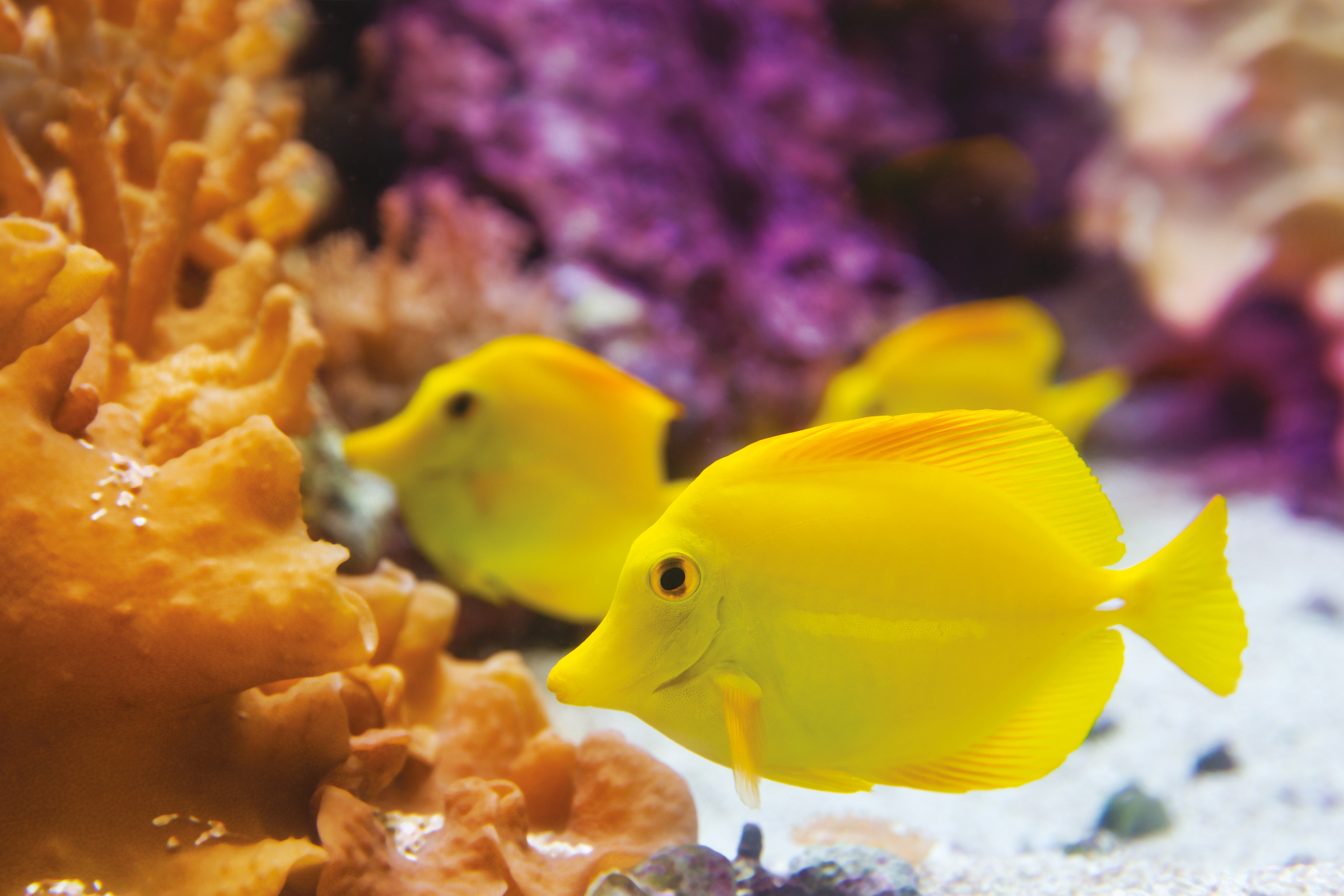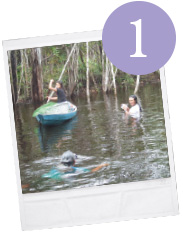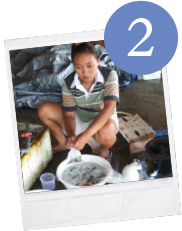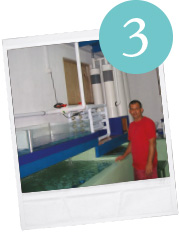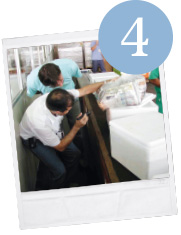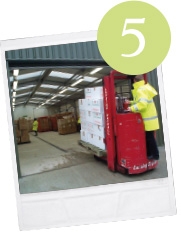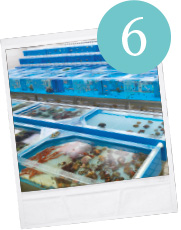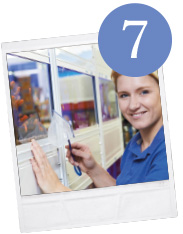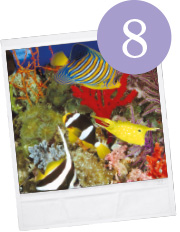Pet Industry Joint Advisory Council (PIJAC) and the Pet Leadership Council (PLC) would like to thank the Ornamental Aquatic Trade Association (OATA) for providing this Wild Caught Report for a global perspective on the Ornamental Fish Industry, with which we then focus on our U.S. story.
Welcome
Keith Davenport, Chief Executive
Ornamental Aquatic Trade Association
The ‘voice’ of the ornamental aquatic trade in the UK

Ornamental fish are caught in very small volumes but command high prices relative to other local uses of the same species. Demand will always be limited because not everyone wants to keep an aquarium.
It’s estimated that more than 90% of ornamental marine fish and invertebrates, like coral, and between five and 10% of freshwater fish entering the ornamental fish trade are caught in the wild for aquarium keepers to enjoy in their homes.
Fishermen earn a living from their local rainforest rivers, rift valley lakes or coral reefs in some of the most remote countries in the world and are directly dependent on these habitats remaining healthy. Habitats can be protected because communities rely on them.
The industry’s reach is almost global and not only provides benefits to fishermen by giving them a sustainable livelihood, but benefits many others besides. Exporting countries earn important foreign currency, which trickles down throughout their economy, supporting a myriad of other businesses that provide goods and services to all the people involved.
We should also recognise there are benefits for those who keep fish. They become knowledgeable about the species they keep and grow more empathetic about the conservation of the eco-systems they come from. They contribute to saving species from extinction by maintaining captive populations even when extinct in the wild (no wild caught species of ornamental fish has ever been made extinct by collection alone). And aquarists in (usually) developed countries gain health benefits by just watching aquariums. But to me these are not the benefits we should focus on.
I believe it is the important benefits in the country of origin that are so often missed in the debate about wild caught fish. People, not fish, really lie at the heart of this issue. We need to ask ourselves what other livelihoods are open to them to feed their families if they cannot catch the species on their doorstep – and keep them alive to supply to our industry. And are those alternatives really ‘better’ – for either them or the environment?
We acknowledge that a small industry like ours cannot create perfect equity in areas where long established social structures exist determining who gets what. And like any industry of our size extending into remote areas of the world, best practice may not be used everywhere. Where it isn’t we will continue to push for improvement. But I believe good practice is the ‘norm’ in this industry and fundamentally wild caught fish are a good news story.
This industry can also play its part in meeting the UN 2030 Sustainable Development Goals. It provides livelihoods to sustainable artisanal fisheries and thus avoids poverty, by providing income from exports and income to feed, clothe and provide education for families, and it can help to avoid climate change by maintaining pristine rainforests and the carbon fixed in them.

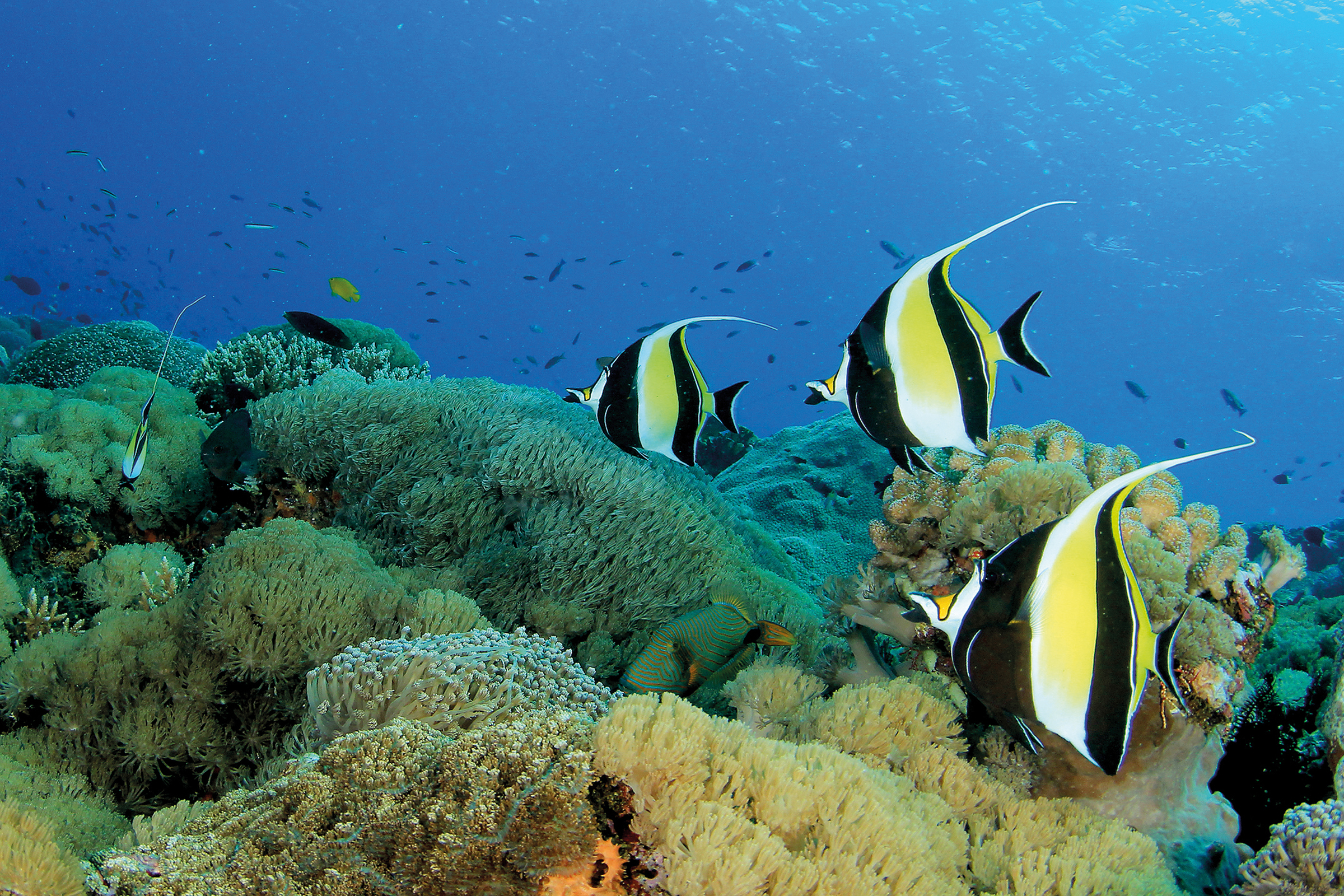
Wild caught fish: key facts

It provides vital livelihoods for tens of thousands of fishermen & communities in remote areas that have fewer employment opportunities & less welfare provision

Local people use and maintain local resources to make a living

The source country benefits are monetary, technological and information-based

Fishkeepers are knowledgeable of habitats like reefs and rainforests and are empathetic to their conservation needs

Fish are collected with the sole aim of keeping them alive
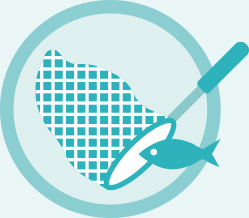
Fish are caught with very small nets compared to trawlers (for food fishing)
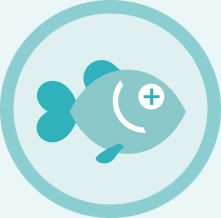
It is a targeted catch – with virtually no bycatch
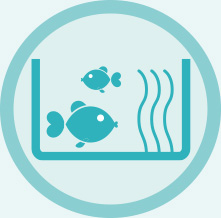
Fish in aquariums live longer than in the wild
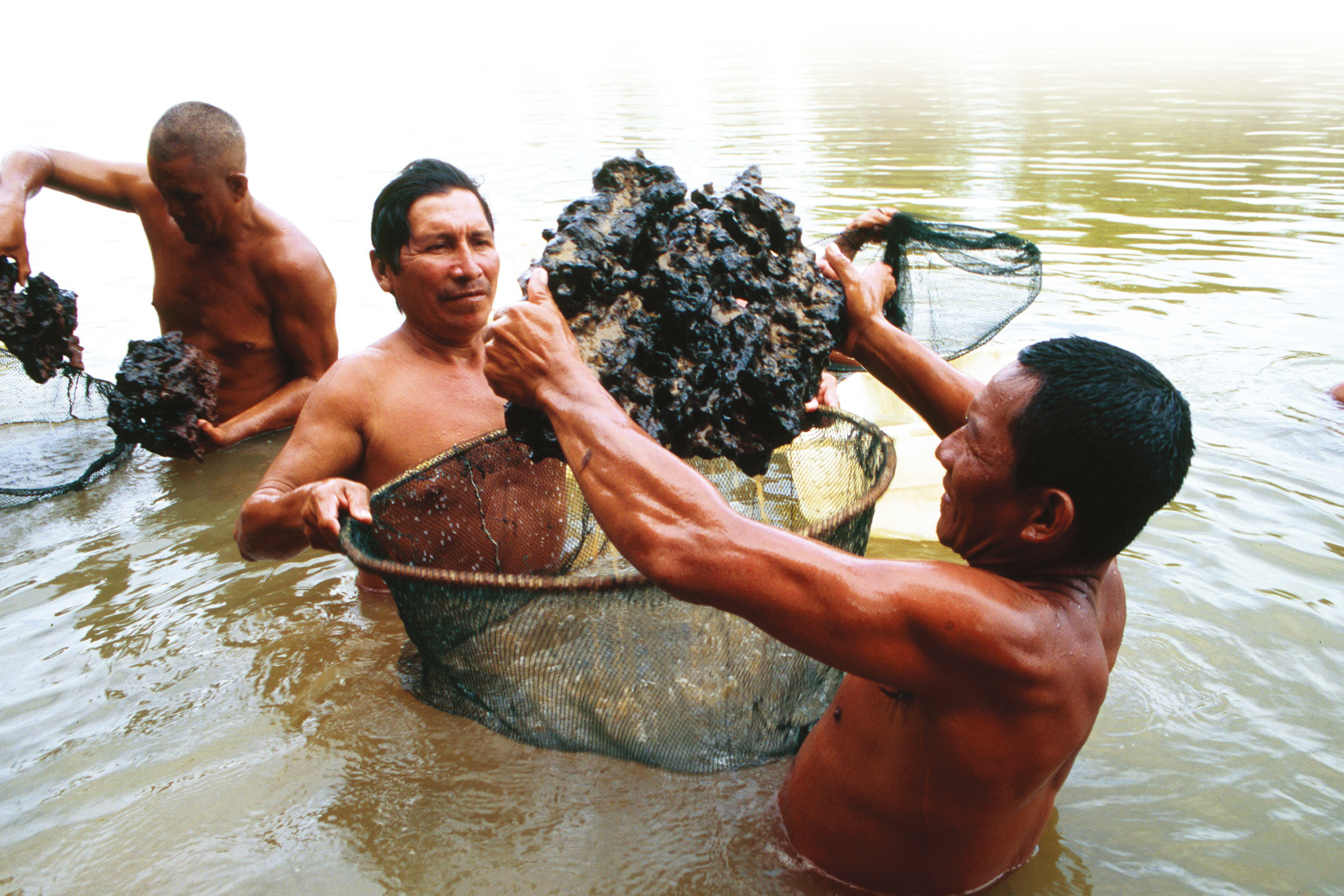
Why, where & how?
Trade not Aid
Wild caught ornamental fish are most often caught in coastal and riverine communities where opportunities to earn a living are limited. Buying one wild fish is like a ripple on the water – your money supports not just the fisherman but also many other businesses along the supply chain within the country of origin. After all, you can’t catch fish without nets and you can’t export without packaging and airports.

- Housing
- Food
- Clothing
- Education
- Healthcare
- Mosquito nets
- Household fuel

- Plastic bags
- Metal rings
- Rubber bands
- Box (cardboard and polystyrene) manufacturers
- Oxygen
- Knives/machetes

- Diving equipment manufacturers/retailers
- Net makers
- Boats & motors manufacturers and retailers
- Fuel oil
- Repairs

Contribution to:
- Access roads
- Airports
- Schools
- Utilities: water & electricity

- Holding tanks
- Filters & heaters
- Pipework
- Air & water pumps

Country’s government (& employees) also benefit as taxes will be paid and some certificates, licences, health permits, and documents incur charges to the exporter

- Van drivers
- Vehicle parts, repairs and maintenance
- Fuel
Wild caught ornamental fish
– An A-Z of global trade
From Argentina to Zambia, over 50 countries spread across 5 continents participate in the collection and export of wild caught ornamental fish, corals and invertebrates. This truly global trade supports many small Pacific islands and countries that are recognised as having otherwise limited economic opportunities.
Who’s buying them?
Ornamental fish are enjoyed by people across the globe but the main markets are undoubtedly in North America, Europe and Japan. China also has a long tradition of keeping fish and, with an expanding middle class, this looks set to increase. There is also seems to be an emerging trend within India of producing ornamental fish both for export and to satisfy a rising interest in keeping fish, although there are no reliable statistics for this.

How are fish caught?
Catching wild fish for aquariums is mainly done by hand, using a minimum of equipment. This allows fishermen to carefully select how and what they catch – often targeting the species of interest they have orders for.
This causes a minimum of damage to the habitats where fish live. And of course great care has to be taken because the fish need to be alive and in good condition in order to travel around the world and be healthy when sold.
Natural objects
Fish, like catfish and cichlids, hide in submerged wood, rocks and shells which can be picked up and gently shaken over nets to catch them.
Chase & net
Fish are shepherded into a handheld net using a paddle in both freshwater rivers, like the cardinal tetra in Brazil, and on coral reefs. Stop nets, usually a couple of metres long, are also used by reef divers. Fish caught up in them are picked out by hand, causing little disturbance to the reef.
Hand picked
Usually sedentary fish, starfish, crustaceans and sea cucumbers at the seashore, along with freshwater fish caught in muddy floodplains, are caught by hand, mostly by women as a subsistence activity to bring in a bit of extra income as they fish for food.
Traps
Traps are set either with bait to lure fish into them or to capitalise on the fish’s natural behaviour, like clown loach which naturally live in hollow wood so fishermen place bundles of bamboo pipes on the river bottom. Traps are widely used in Africa, although research shows only a small range of fish is caught this way.
Active netting
Seine nets (larger nets pulled in by hand) are not widely used for catching ornamental fish although sometimes nets are used to sweep up woody debris where discus hide. Nets are also used to catch adult arowana fish to harvest fingerlings before the adult fish are released back into the water.
Diving
Snorkelling requires little investment but fishing is restricted to hand picking or hand nets. At slightly greater depths, hookah and scuba diving are the main ways to catch fish, again with hand-held or larger nets, or to collect corals by hand. This is expensive equipment so often it’s the wealthier fishermen who do this or it’s supplied by a middleman/exporter.
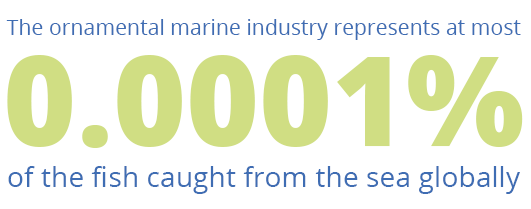
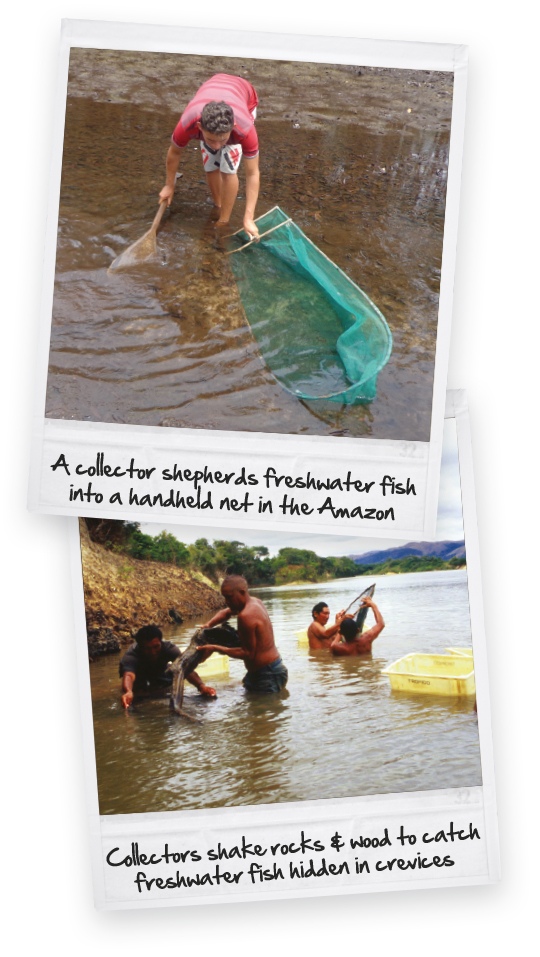
Conservation and celebration
The lower and middle Rio Negro in the state of Amazonas launched the ornamental fish trade in Brazil when cardinal tetras were discovered in the 1950s. These tiny fish contributed 65% to the town of Barcelos economy and, in its heyday, the trade employed at least 1,000 families directly – not counting supporting industries.
These families rely on this vital income and preserve vast tracts of the Amazon (sometimes described as the ‘lungs’ of the earth) to maintain the pristine conditions these fish need to flourish. It’s estimated that 67 billion tons of carbon are fixed in the areas of the Amazonas where cardinal tetra are collected. That’s an area about the size of England and Wales – but with a population of just 40,000.
Every year they celebrate the trade with a huge fiesta – the annual Ornamental Fish Festival – at the specially built PiabaDome in Barcelos. It’s a dazzling explosion of dancing, colourful costumes, fireworks and music. Thousands gather to watch the competition between the tetra and discus which tells the story in song and dance of the role these two precious fish play in this region. Judges are flown in to declare the winner based on choreography, costume, music and floats. This is not a spectacle put on for tourists – few foreigners visit the region – but a very public celebration by the community of the importance this trade has for them.
But farmed varieties from the Far East, United States and Czech Republic, as well as competition from other South American countries, coupled with a lack of year-round availability because of the flooding of the river and the natural lifecycle of the fish, means there has been a steady decline in the trade of wild caught fish from Manaus.
This community has worked hard to build a global appetite for this colourful fish and is being supported by a non-profit organisation called Project Piaba to ensure its survival. It recently gained Geographic Indication status for ornamental fish from the Rio Negro area as another way of trying to protect this sustainable form of fishing.
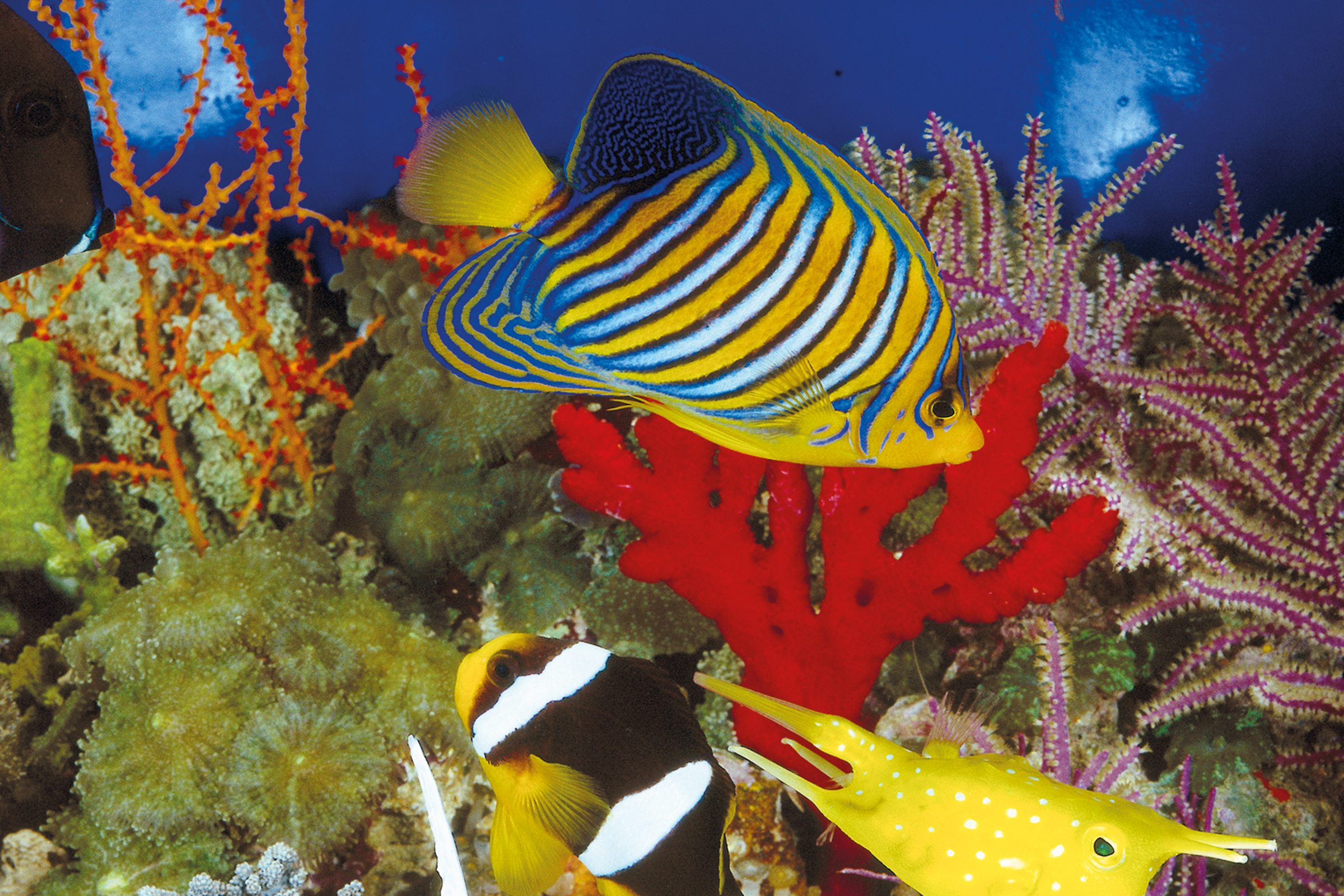
The fish’s journey
From the wild to a US home
Did you know?
Fish must have internationally recognised health certificates, export/import permits or licences, and any necessary CITES documents to travel.
To ensure good conditions on the flight, bags contain 1/3 water and 2/3 oxygen; heat or ice packs are put in the containers to ensure suitable temperatures are maintained.
Over 99% of all ornamental fish imported to the US, specifically to wholesaler Segrest Farms, survive the journey.
USFW, Habitattitude, and OATA along with other international pet trade bodies, campaign to make sure people understand they should never release ornamental fish & plants into the wild.
How fish are protected by regulations
Unlike food fishing, the aquarium industry is based on catching and selling live specimen fish, so it’s in the best interests of all involved, and commercially prudent, to keep them healthy and as stress-free as possible at every stage of their journey. This is a global trade that is regulated at every stage of the fish’s journey, from the country of origin, through the complete transport chain to the point of purchase in the US.
In the US the Lacey Act, which has been in place since 1900, regulates the import of any species protected by international or domestic law and prevents the spread of invasive, or non-native species.
Country of origin
Fisheries Law
Countries supplying ornamental fish will often have their own fisheries laws/regulations that may set strict quotas on certain species that can be caught, outline the areas where livestock can and cannot be collected and even ban certain species from being exported.
Species Protection
Some species are also protected by CITES (The Convention on International Trade in Endangered Species of Wild Fauna and Flora). This international agreement between governments aims to ensure the international trade in specimens of wild animals and plants (such as hard corals, seahorses, clams and Asian arowana), does not threaten their survival. To get an export permit for any listed species to be traded, CITES requires that ‘a Scientific Authority of the State of export has advised that such export will not be detrimental to the survival of that species.’
Fish Health
Shipments are inspected and must have an internationally recognised health certificate. These certificates are issued by licensed veterinary physicians.
Green chromis are a popular marine aquarium fish but are banned from export from the Maldives because they are used as bait for tuna fishing.
CITES helps protect about 35,000 species worldwide. Other than fish some of the species include Cacti, Iguanas, and Parrots.
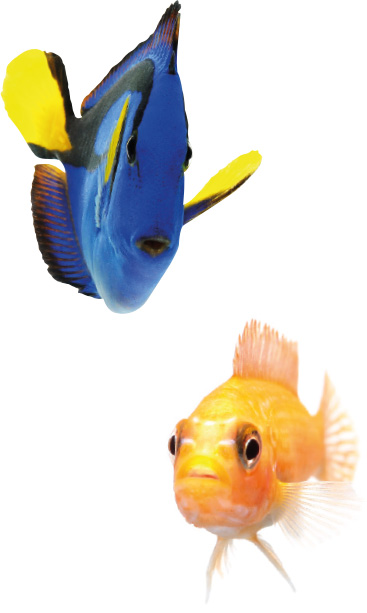
In the air
Safe Transportation
The International Air Transport Association (IATA) is a trade association of around 260 airlines which has set internationally recognised standards on the transportation of animals in a safe and humane manner, with airlines open to prosecution if they contravene those rules. In addition, exporter consignments not meeting IATA packing standards should be rejected by airlines. Transport packaging is designed to protect the animals inside.
IATA rules state that all aquatic organisms must be packed so that they will survive at least 48 hours from the time of their acceptance by an airline.
On arrival to the US
Border inspections
Live animals must enter the US through specific designated ports, which are supervised by the US Fish and Widllife Service (USFW), USDA and US Customs and the TSA. The containers which arrive are distinctive, clearly labeled that they contain live fish and are well-documented with fish health certificates, CITES import permits, export permits and customs declarations, as required. Each consignment is checked by both Customs officials and USFW inspectors. Between them, they make sure there are no illegal species, that animals have the necessary health certificates and CITES permits, and that animal health and welfare standards have been met.
Biosecurity
Preventing the spread of aquatic diseases is also crucial. Fish importers must register and permit with the US Fish and Wildlife Service (USFW). Aquaculture businesses and wholesalers are subject to inspection by the USFW, Department of Agriculture and state wildlife agencies. Ornamental Fish Wholesalers and Distributors also must follow the Aquaculture Best Management Practices (BMPs). There are often state level BMPs, and the industry has it’s own BMP Program in place as well.
Invasive Species
There are a number of agencies in the US that share responsibilities regarding invasive species; those agencies include Departments of Agriculture, Commerce, Defense, Homeland Security, Interior, Transportation, the Environmental Protection Agency and the Executive Office of the President. The Departments of Agriculture, Commerce and Interior co-chair the National Invasive Species Council (NISC) which helps with interdepartmental coordination of federal invasive species actions and works in the US. Invasive species are often monitored and regulated on a state level as well.
After Arrival
In the US, US Fish and Widlife regulations state your in-transit shipment must comply with foreign wildlife laws, and live wildlife must be transported humanely. In some states, nonindigeonous fish species must be commercially bought, warehoused, and sold only under governing state rules as well.
In the industry
Animal Welfare
At least two dozen species of fish species have been saved from global extinction due to the aquarium hobbyist, like the C.A.R.E.S. (Conservation, Awareness, Recognition, Encouragement, and Support) Preservation Program.
If not for hobbyists some Zoos and Aquariums would be unable to obtain certain species for display.
Fishermen rebuild reefs and their livelihoods
Les village is located in North Bali. The fishermen from Les are among the main suppliers of ornamental fish from Bali for the marine aquarium industry that started in the 1980s. About 40 fishermen from the village collect more than 200 species of aquarium fish and other marine organisms on the nearby coral reefs.
Watch the following video for the full story.
Read the full case study report below
The ornamental fish industry is an important source of income for many fishing villages throughout Indonesia. And, like the fishermen in Les village, fish collectors everywhere are becoming concerned about the sustainability of the resources they depend upon and are taking action to protect their environment.
In the early days the fishermen collected many fish – regardless of species – using homemade goggles and hand woven nets. Today, using fins, masks and factory-produced netting that they can adapt, they only collect the fish specifically ordered by buyers. Since 2010 LINI, a nongovernmental organisation based in Bali, has also been helping the Les fishermen to restore their reefs using artificial structures, fish domes and shrimp pots which are placed in the sea to provide habitats and help restore populations of fish and ornamental shrimps.
Maday is an experienced 35 year old Balinese fisher from Les village; who has been collecting for the trade since 1997.
“Today I received an order via text message from a fish exporter from a village two kilometres from my house. I start my activity by preparing my equipment… Today I started in the morning and finished at noon but unfortunately I wasn’t able to fulfil the order because the current was strong and the visibility was not good so it was difficult to look for fish.”
Now, working with LINI, he is helping to build an artificial reef in the seas bordering Les village which is now sustaining his livelihood. “Ornamental fish are my main source of income so it’s important to have good fishing areas for the future. As a result of this work we’ve created a sustainable source of fish that enables me to send my children to school, have my own house and provide for my family’s daily needs.”
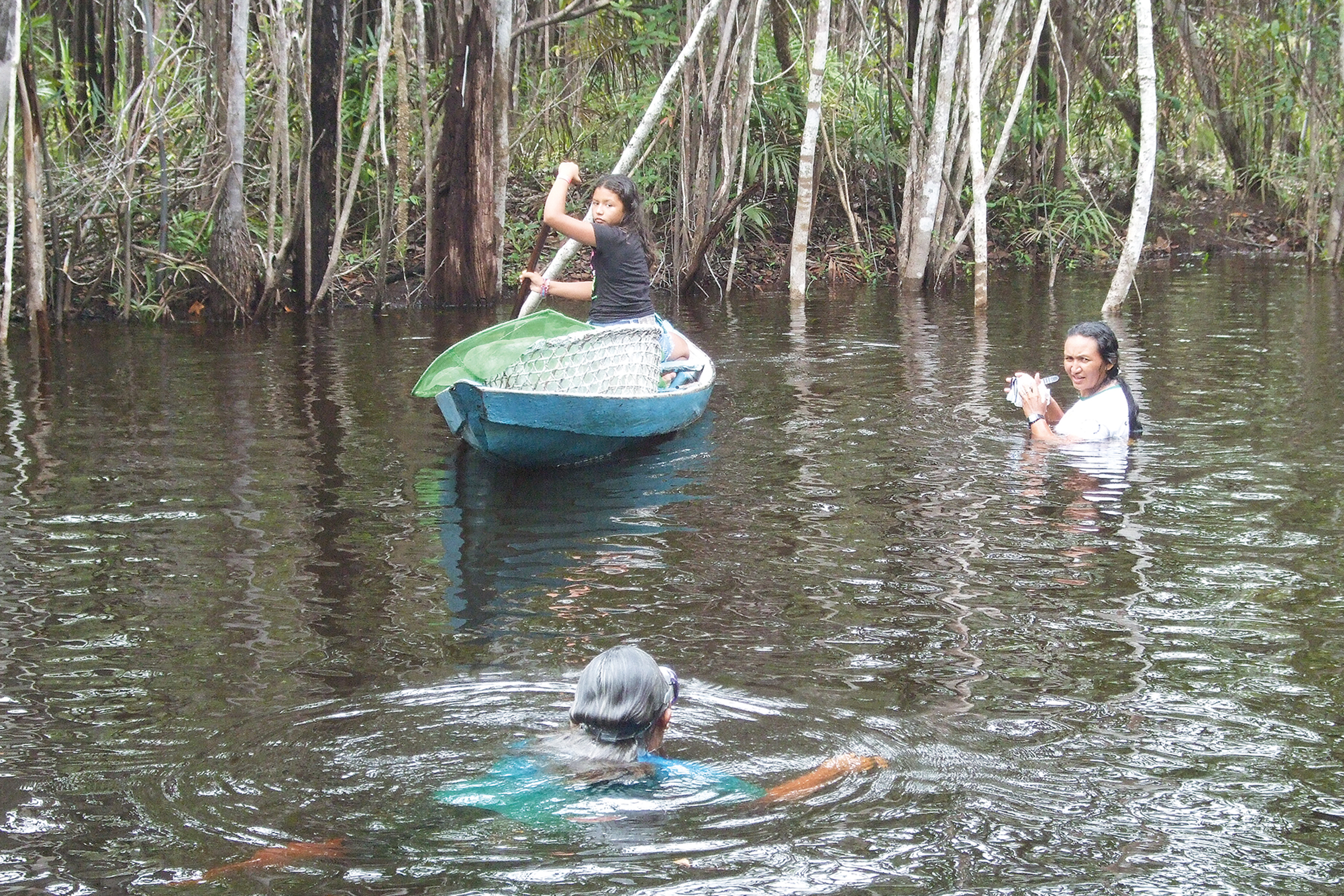
What would collectors do if
they couldn’t catch wild fish?
What would collectors do if they couldn’t catch wild fish?
In many places, collecting ornamental fish may not be the sole way a collector makes a living for their family but it often provides a significant portion of their total income.
So what would happen if they couldn’t collect fish for the aquarium industry any more? Would alternative livelihoods be as economically productive and as sustainable as this low volume, high value practice? And could the alternatives actually prove environmentally damaging?
Alternative livelihoods will obviously vary depending on local conditions but examples might include:
Fishing for food
Live fish caught for aquariums are worth much more than fish caught for food or bait.
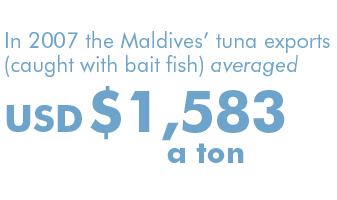
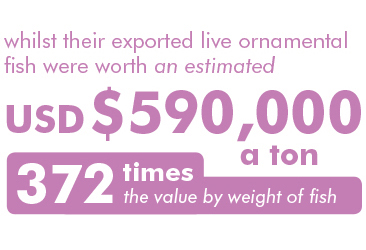
Capture and use of other wildlife species
Collectors in coastal areas might turn to harvesting turtle eggs for food or may collect other wildlife species for the same purpose. These may be endangered or protected species which may suffer as a consequence.
Logging, ranching and slash & burn agriculture
Crops, like soy beans or palm oil, and grazing cattle need clear ground so trees are chopped down to accommodate them. The effects of deforestation are devastating and well-known and affect not only aquatic species – such as in the Amazon – but also land animals through loss of habitat, one of the leading causes of species extinction. Deforestation also contributes to erosion, increased runoff and pollution of waterways as well as increased flooding and climatic change by the release of carbon into the atmosphere.
Tourist hotspots
Whilst potentially boosting the local economy, increased tourism can also bring negative impacts from construction activities (like dredging for ports) and operations, such as sewer discharges, fertiliser runoff, groundwater extraction and pollution, increased waste and impacts associated with increased numbers of visitors (like noise, trampling and breaking corals, littering, CO2 emissions from increased vehicle use, etc). Local fishermen may also catch more fish for food for restaurants and also collect and sell corals, shells, echinoderms (e.g. starfish) and dried seahorses as souvenirs.
Coral mining
Despite being sometimes illegal, coral can be used as aggregate in infrastructure projects, like roads and hotels. If unable to be sold live, more of the reef could be broken up and sold for building materials with much less care taken over its removal.
From rural homes to city slums
With fewer economic opportunities people are driven to cities in the hope of finding stable (or any) employment.
Unfortunately, this seldom happens and people are left to settle in marginal areas that lack sanitation and basic services such as electricity, healthcare services and education. This, more often than not, creates overcrowding in vulnerable areas which become focal points for transmission of diseases and other social issues.
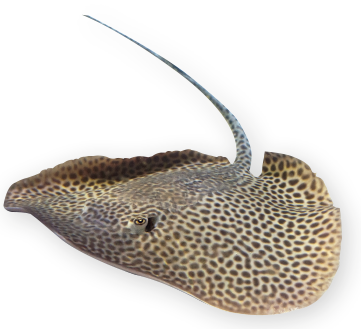
Tourism with a sting in the tail
The trade in freshwater stingrays for the ornamental trade in South America is tightly regulated with some species banned from export and others subject to a strict quota. Yet one study found that some Brazilian ecotourism resorts were killing stingrays to reduce the risk of visitors being stung. This activity is totally unregulated and was reported to be responsible for the killing of around 21,000 stingrays, more than the 15,000+ export quota for the ornamental trade.
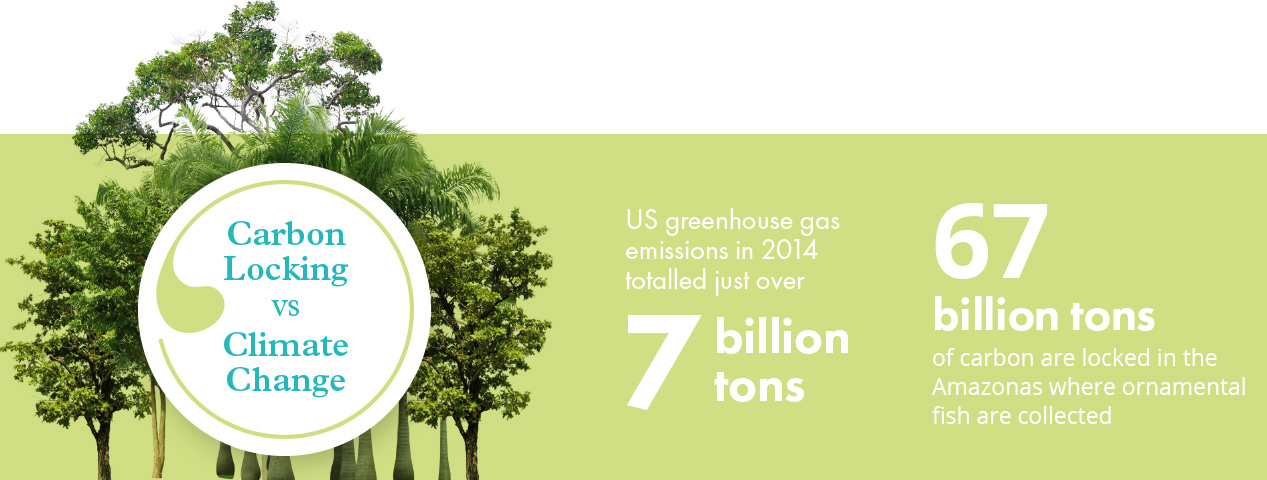
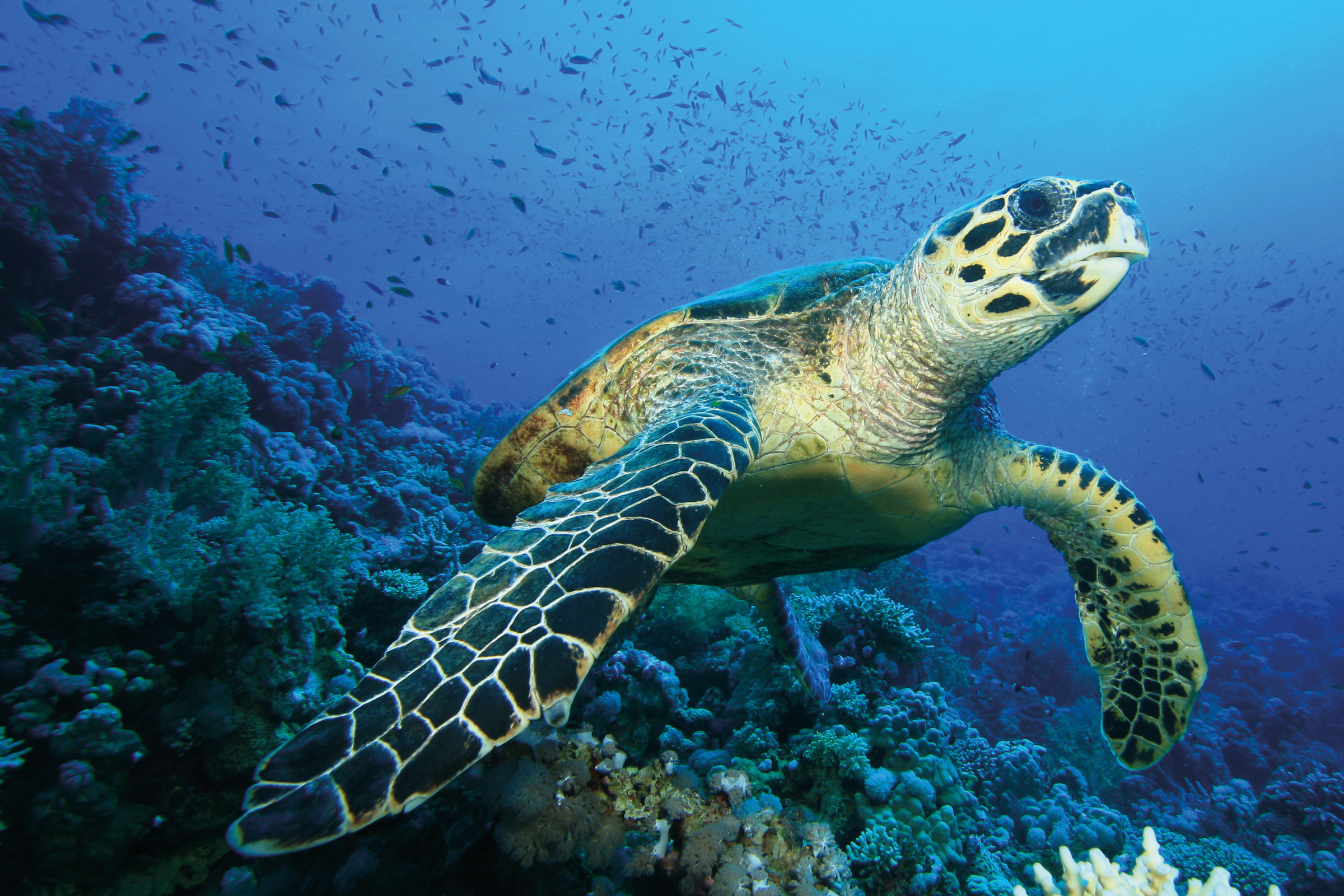
The industry
in context
Some facts about the global
ornamental fish industry
Marine
Ornamental fish are collected from across the Pacific and Indian Oceans, the Caribbean and the north east coast of Brazil – a vast area. The most popular species in trade have a wide geographic distribution, are abundant in many areas and are very fecund. Their populations are very resilient.
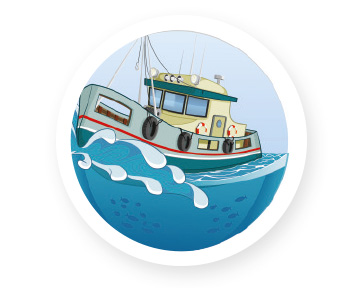
Annual global catch from the sea
80.9 million tons
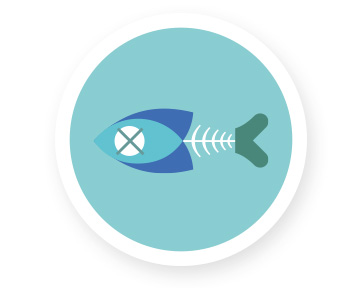
Fish discarded dead or dying
7-33 million tons
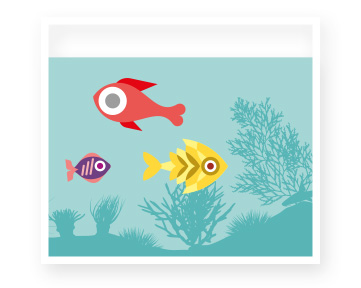
Sold alive in the aquarium trade
70 tons
Why aren’t more marine fish captive reared?
Many have complex life cycles where their eggs and larvae spend time floating in the ocean, conditions that are difficult to replicate in hatcheries. Most species are only traded in very small numbers – say 1,000 or less from any source – making it a very small market.
WANTED! Alive
Coral carefully harvested and kept alive for the ornamental fish industry is weight for weight worth 100 times more than the same coral mined and burnt to create lime for building.
Tropical prawn trawlers throw away 95% of what they catch
Freshwater
Annual global catch
of freshwater fish
11,700,000
tons
Fish caught for food annually in the state of Amazonas
60,000 to 70,000
tons
Alive & Kicking
The collection of fish destined for aquariums has never caused a species to become extinct in the wild.
Catch cardinals or release carbon
The number of ornamental fish exported from Amazonas has reduced substantially over the last 10 years. The amount of rainforest cleared to use for agriculture has increased during that period.
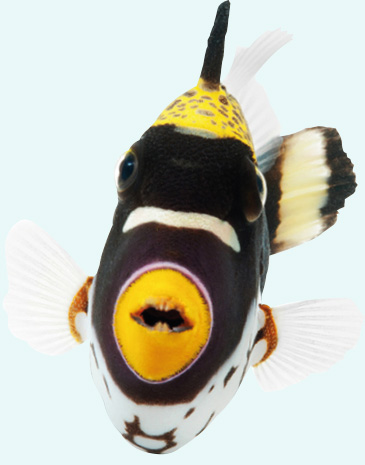
Jose and the ‘deal with the water dragon’
Jose is a small boy who lives with his family in San Martin de Tipishca, which is located within the National Reserve Pacaya-Samiria in Peru. It is here that he and his family gather the ‘dragon of the Amazon’, the arowana.
Watch the following video for the full story.
Read the full case study report below
“People say we have a deal with the dragon, we take care of them during the whole year and once a year we catch them in return. My father always says the male takes care of the fingerlings, putting them in his mouth and that one of the most important things they have achieved with the management plan is the release of the males back into the lagoon. Some time ago they used to sell the males at the market. We feel proud to release them now. That’s the deal we have with the water dragon.”
A freshwater fish originally caught for food, the arowana is now highly prized by aquarists, particularly in Asia where they are seen as symbols of good luck and prosperity.
This popularity had led to a worrying decline in fish numbers, after outsiders came to the region to exploit large forest areas with little control.
During the year, the fishermen of San Martin de Tipishca spend time taking care of the arowanas, estimate the number of breeding specimens there are and calculate the number of offspring (‘fingerlings’) that can be safely collected each season.
Male arowanas mouthbrood these fingerlings. Previously fishermen would harvest the fry and then kill the male and sell it for food. But now the males are put back into the water to breed again. And, if it goes back into the water alive it will reproduce year after year.
An adult arowana can weigh up to 1.5kg which would fetch $1 per kilogram for food, earning the fishermen just $1.50 per fish. However, the same specimen can produce 150 fingerlings which each sell for $1.50 which means the income from one fish is now worth $275 per year.
Now, because of its earning potential as an ornamental species, and due to the adequate management of the fish populations, its value has increased and brings benefits to both the local population and the ecosystem. And, by buying fish that use sustainable management plans, aquarists can play their part in conserving the Amazon and supporting the communities who live there.
The US Industry in context
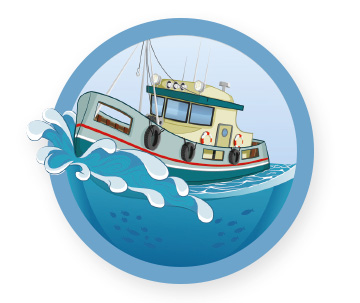
Catch from fishing boats landed in the US
4.4 million tons

Landed from marine recreational anglers in the US in 2015
151 million fish
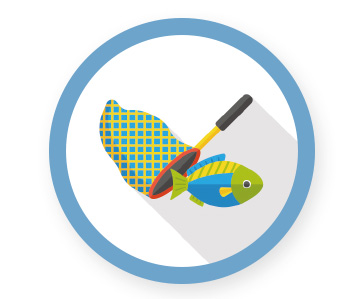
Ornamental fish imported to the US in 2015
33 tons
Ornamental Fish imports in the US in 2015:
Total Value:
$50 million
Number of Marine Species:
Over 1,800

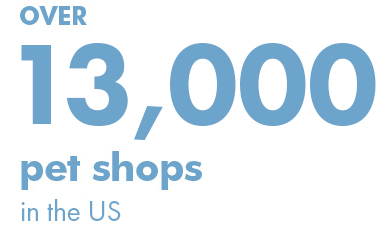
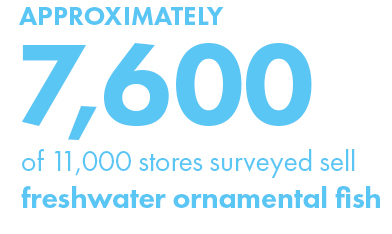
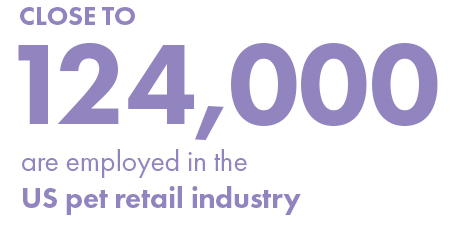

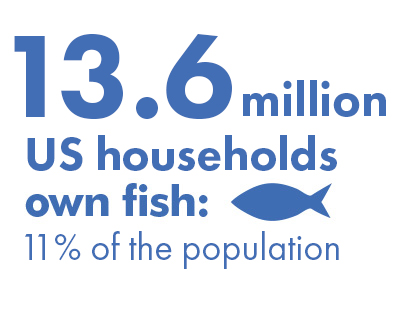
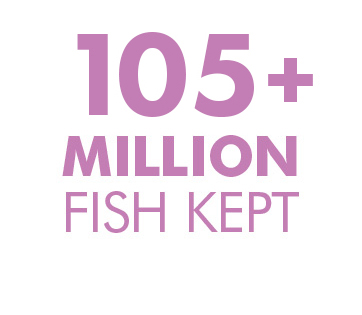
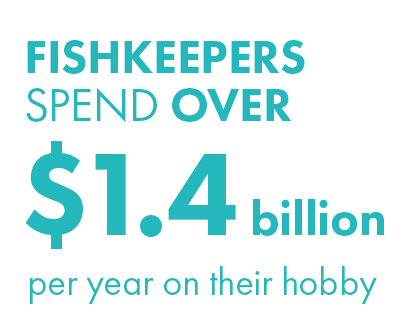
Nb: As well as the retailers, the industry includes a multitude of manufacturers, aquatic plant growers/sellers, fish breeders, importers & consolidators, wholesalers, pond & aquarium contractors
Knowing your ornamental fish
Freshwater Fish
The vast majority of fish sold in the US, such as goldfish, platies, mollies and danios are freshwater fish that are captive bred. Even tetras and angel fish – which can come from the wild – are most often captive reared.
Marine Fish (salt water)
The US marine ornamental fish industry is far smaller by volume than that of freshwater species. Because the fish are largely wild caught (90%) and therefore imported, the cost of the fish as well as the set up and maintenance of a marine aquarium is significantly higher than for aquarists keeping freshwater fish.
Pets are good for our health, and are estimated to save the US Health Industry $12 billion every year. Watching fish in an aquarium leads to reduced blood pressure and reduces anxiety.
The cost of setting up a marine aquarium
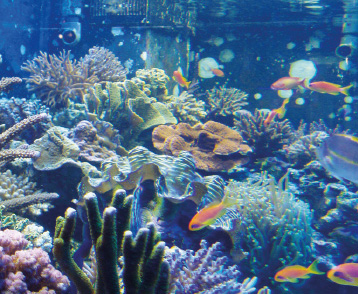
Tank |
$600 |
Accessories |
$370 |
Fish |
$245 |
Running costs: |
Up to $245 per year |
These prices are based on the average cost of setting up an 75 gallon marine or tropical freshwater tank.
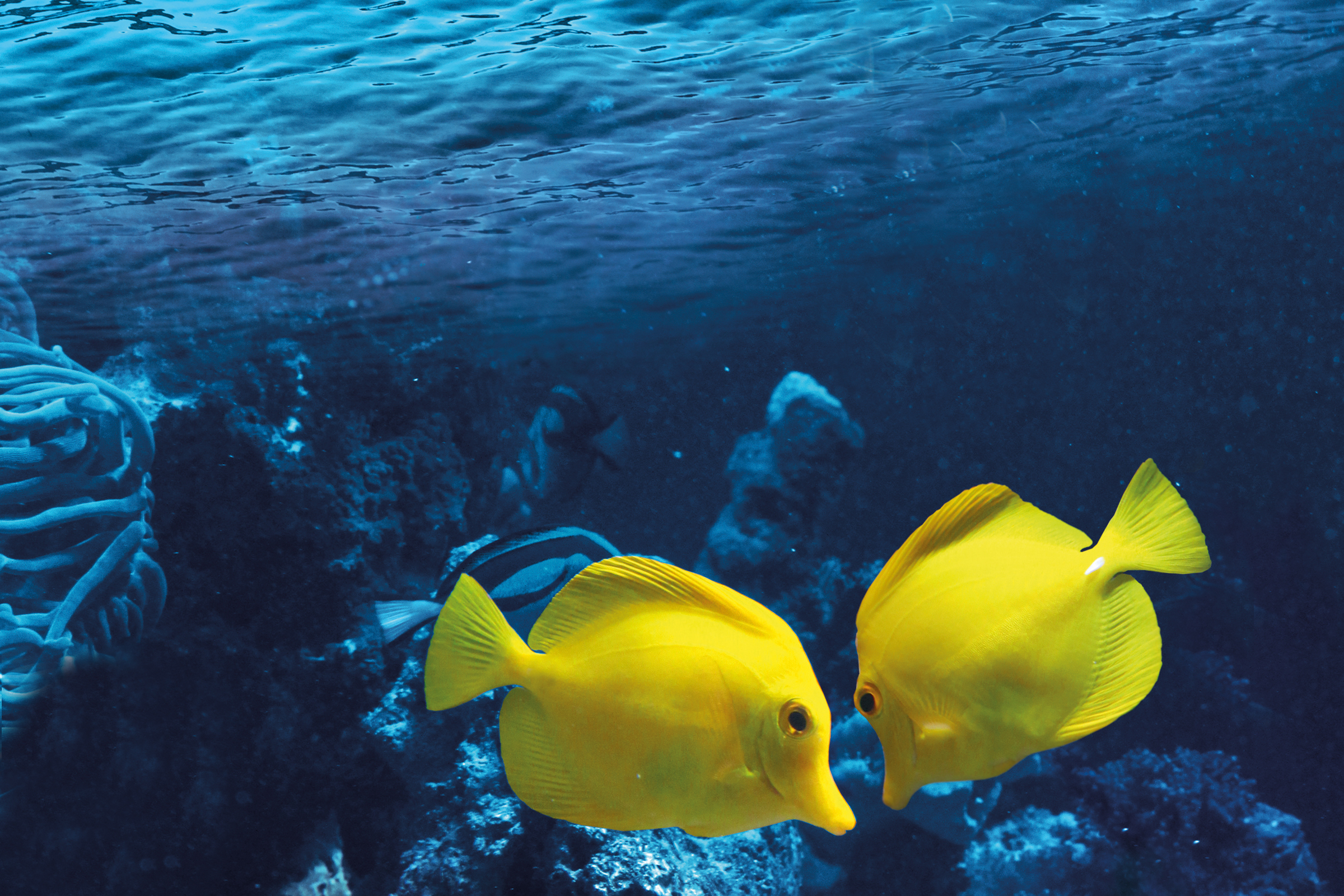
Best Practice
This report concentrates on the positive stories in our industry. But, as is the case in any industry, issues do arise that have, and are, being addressed.
We are not a perfect industry – current best practice is unfortunately not used by all businesses. But best practices themselves are continually improving and certainly we know that many US companies do their best to do business with the best overseas providers.
Some of the issues the industry is addressing are outlined below. But we do not believe these characterise the industry as a whole. Nevertheless it is important for us to acknowledge where there are issues, although we think this report illustrates there are many more examples of our industry bringing positive benefits to people and places across the globe.
The use of chemicals
Problem:
The practice of squirting cyanide to stun hiding fish to ease collecting started in the Philippines in the 1980s and spread to other countries. This destructive practice is widely condemned by the industry because it damages coral reefs and leads to high fish mortality rates along the supply chain.
Best Practice:
The development of reliable, easy-to-use, non-lethal field tests would be very welcome. Companies worldwide are already working dilligently to make sure fish caught in this way do not enter the market, even without a field test, by working closely with their suppliers and with local charities, like LINI in Indonesia. In the US the Lacey Act, prohibits the importortation of animals caught in violation of another country’s laws.
Fish welfare and mortality
Problem:
Like any trade that exports and imports live flora and fauna, the welfare and mortality rates of exported ornamental fish is a highly emotive issue, and rightly so. Ours is a low volume, high value industry that relies on the provision of LIVE and HEALTHY stock.
Best Practice:
Where best practice is followed, mortalities at all stages along the supply chain have been reduced to very low levels, often achieving mortalities below 1% from exporters to importers. A recent report examined fish collection in the Federated States of Micronesia, a set of small islands in the Pacific. These collectors and exporters had all received training in best practice in collection, handling, transport, holding and shipping from the Secretariat of the Pacific Communities (SPC), an international development organisation. It reported mortalities of less than 1% from collection to export and less than 1.4% at the importer in the United States. There’s no reason to believe this level of survivability can’t be achieved across the globe if best practice methods are routinely followed.
Welfare in the aquarium
Problem:
There are often criticisms about animal welfare levelled at the industry. Inappropriate advice and sales undoubtedly harm our reputation.
Best Practice:
There continues to be huge improvements in the equipment and food available to fish-keepers to help them replicate reefs and riverbeds. There is also a wealth of information available, from care leaflets and books to videos and forums on the internet as well as specialist magazines. Pet retailer chains usually have employee training programs for Aquatics, maintain Quality Control Standards, and often certify aquatic specialists in their operations. The industry is motivated to attract new customers, engage them to share our enthusiasm in aquarium keeping, and retain them as returning, successful customers.

